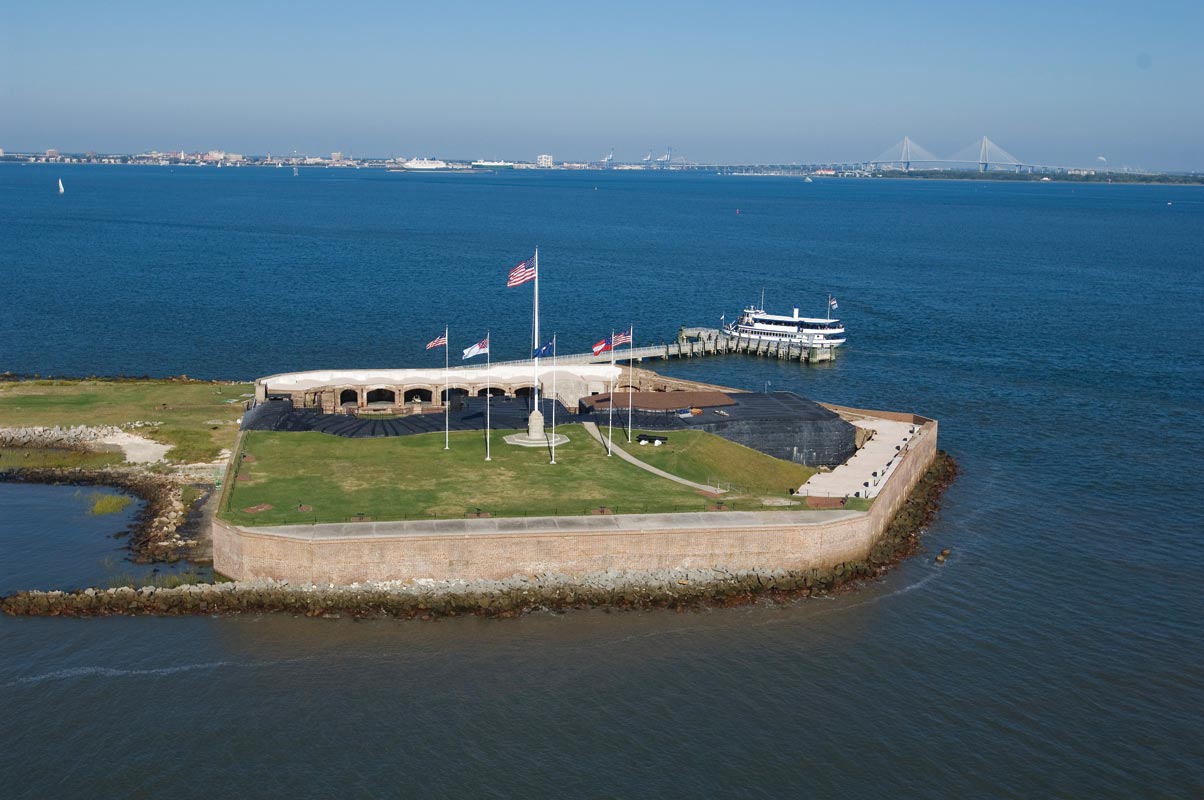
Charlestonians, with a well-deserved reputation for friendliness and courtesy, will proudly, but without boasting, point out that their city had the nation’s first museum, first theater, first public library, first regularly scheduled train and first golf club; it also has the country’s oldest municipal college and oldest continuously running municipal chamber of commerce.
The country’s first historic preservation district has made sure the city’s rich collection of historic structures remain intact.
Charleston’s firsts also extend to two of the nation’s defining wars.
Most people know that the first shots of the Civil War were fired in Charleston at the Union garrison at Fort Sumter in Charleston Harbor.
Not as many, however, may know that one of the first American victories in the Revolutionary War occurred in Charleston at the Battle of Sullivan’s Island on June 28, 1776, a week before the signing of the Declaration of Independence.
Also, the first submarine to sink an enemy ship was the CSS H.L. Hunley, which sank the USS Housatonic in Charleston Harbor during the Civil War.
Groups can find out about all three incidents at sites in Charleston.
Boats to Fort Sumter depart from the Fort Sumter Visitors Education Center adjacent to the South Carolina Aquarium.
“On the boat ride, there is an information tape with historical background,” said Rick Hatcher, a historian for the National Park Service, which operates the site. “You also get an abbreviated harbor tour, so you get two items for the price of one.”
At the fort, which Hatcher described as a “stabilized ruin,” groups can get a talk from a park ranger or take a self-guided tour. There also is a small museum on the island.
Back on the mainland, the visitors education center has exhibits and artifacts, including a 20-by-36-foot replica of the garrison flag on a wall next to remnants of the original flag.
The National Park Service also operates Fort Moultrie, whose then-palmetto-log walls withstood a British attack; the Redcoat cannonballs bounced harmlessly off the soft, flexible trunks.
The fort was subsequently captured by the British and then replaced by a brick fort in 1809. The fort was heavily damaged by Union bombardments during the Civil War, and several major upgrades were made during the late 19th century.
Today, the fort is interpreted to show its roles in various wars, from the Revolution to World War II. Most of the site is self-guided, and there is a visitors center museum with exhibits about the fort’s history.
The Hunley sank shortly after its successful mission in 1864 and lay undetected on the floor of Charleston Harbor until 1995. The 40-foot-long submarine was subsequently raised in 2000 and is undergoing slow restoration in a special tank at the former Charleston Navy Yard in North Charleston.
The Hunley had rested at a 45-degree angle since its sinking; the vessel was returned to an upright position in June after nearly two years of painstaking planning.
The Warren Lasch Conservation Center, where the Hunley is housed, is open to the public only on weekends.
The remains of the nine Confederate sailors who perished on the submarine were buried with military honors in Charleston’s Magnolia Cemetery in 2004.
The history of more recent conflicts is on display at Patriots Point Naval Maritime Museum in Mount Pleasant, across the harbor from the city.
The centerpiece of the museum is the 888-foot-long aircraft carrier USS Yorktown, “The Fighting Lady” who served from World War II through the Vietnam War.
The carrier’s flight deck and hangar deck hold a large collection of planes from World War II to Desert Storm. The carrier is also the site of the Medal of Honor Memorial Museum.
Patriots Point, which is attuned to motorcoach groups, also features the destroyer USS Laffey, now undergoing repairs and, therefore, not open to the public; the submarine Clamagore; and a replica of a Vietnam War support base.
View our Charleston Travel Snapshots











